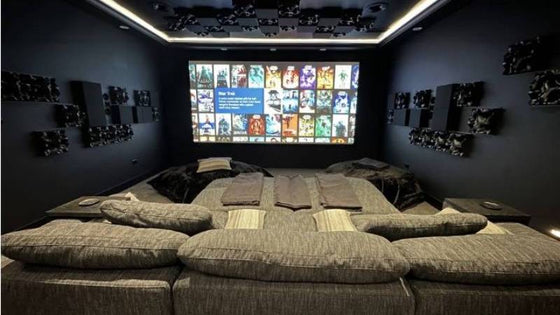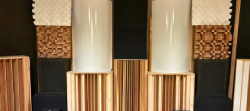Creating a system you love shouldn't be difficult. The Acoustic Frontiers blog is here to help.
RED Digital Cinema, makers of the 4k cameras used in many recent and upcoming movies such as Margin Call, The Hobbit and District 9, have teased us with a glimpse at a laser digital projector designed for the home at the North America Broadcast (NAB) show! Price is slated to be around 10k which for a 4k native projector is way cheaper than the 25k that Sony are currently charging for their VPL-VW1000ES.
Scott Wilkinson from Home Theater magazine was there to report (see here for the full article):
"As its name implies, the REDray Laser Projector uses lasers as its illumination source, and the red, green, and blue lasers are housed in a separate module (the larger box seen directly above the projector in the photo) that connects to the projector itself via fiber optics. Even more interesting, multiple laser modules can be ganged together to produce more light for larger screens, and the lasers are rated to last more than 25,000 hours with virtually no change in color or light output. What type of imager does it use? Red would not say, but I have it on relatively good authority that it's LCOS. I did confirm that it's a dual-imager, polarized-3D engine with 4K resolution, allowing each eye to see 4K simultaneously using passive-polarized glasses. And it can accept frames rates up to 120fps in 2D or 60fps for each eye in 3D—in fact, it's native refresh rate is 360fps per eye."
Putting the lasers in a separate box is a very smart move as it allows the hot running element of the projection system - the light generation - to be placed in a noise isolated rack some distance from the actual home theater room. For the high end home theaters today you will often find the projector placed behind projection glass in a dedicated room or quiet box at the rear of the room, so the RED approach increases mounting flexibility and reduces room construction cost.
The price is very competitive with today's LED projectors which start around the same price bracket. Both laser and LED promise very long life - often quoted at 25,000 hours - compared to bulb based projectors which may only get 1000 hours before needing replacement. The other big advantage of LEDs and lasers is that loss of light output over the projector's lifespan is negligible. Bulb based projectors may lose 50% of light output over their lifetime, making your image nudge almost imperceptibly from bright to dull.
Given RED's rapid rise to success with its digital cameras we expect this new projector to be fantastic! Maybe they will even release it in time for us to install it in our new home theater demo room we have planned...
This media room was intentionally designed to feel like part of the home—not a separate, tech-heavy space. Through careful acoustic planning, equipment integration, and final calibration, we achieved a room that is both beautiful to live in and immersive to experience.
"No other subwoofer system I’ve owned even comes close to what this room delivers. Reaching out to Acoustic Frontiers was one of the best decisions I’ve made—I highly recommend working with them if you want to get the most out of your theater."

Nyal Mellor, Founder, Acoustic Frontiers



Nyal Mellor
Author